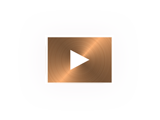The importance of shield and amour in cable selection
Today, in manufacturing plants, many engineers have difficulty with signal fluctuations and instability. This issue affects the production system, reducing the quality of output products. There are many reasons for this problem, in which, the most common cause is the improper selection of power cables, cables that are not shielded against interference or are not equipped with protective armour, which will easily be interfered with during signal transmitter.

Noise in signal transmission is an undesired error, which attenuates the transmitted signal from the transmitter to the receiver. Since then, the quality of the signal received at the endpoint is no longer guaranteed to be accurate. To prevent this situation, the shield is a way to limit errors, ensuring the signal quality from the transmitter to the receiving point is accurate and stable.
SOME TYPES OF SHIELD
There are many different ways to prevent interference, but basically, there are 2 methods:
• Prevent internal (interference) or external (interference from other devices)
• High or low-frequency interference
Currently, there are 3 basic types of anti-interference coating, including aluminum foil wrap (Al foil); tinned copper braid; many small fibers surrounding it to form a spiral.
Aluminum foil (Al foil): use aluminum foil to prevent interference at high frequencies with 100% coverage rate, and 25-35% Overlap.
• Advantages: Low cost, fast production.
• Disadvantages:
- Aluminum foil is easily broken and damaged.
>>See more: What are anti-inteference cables and their applications?
- Not suitable for use in narrow spaces or machines and chains with a lot of vibration because of the poor bend radius.
Tinned copper braid: using tinned copper wire with a small diameter braided together, anti-low frequency interference with coverage rate >85%.
• Advantages: High flexibility and flexibility.
• Disadvantages: High cost, slow production.
Multiple filaments wrapped around spirals: use tinned copper or copper thread > 85% coverage.
• Advantages: For applications with high torsion and flexibility such as robots.
• Disadvantages: High cost, slow production.
In addition, the shield is made from copper foil or copper mesh, or a combination of both.
_any_large.png)
SOLID PROTECTIVE ARMOUR
Protective armour is an outer or inner jacket with the property of resisting harmful effects from the outside. The armour of cables is considered a protective barrier, and the screen has a certain hardness, and this hardness must be able to withstand the impact of external forces, such as pressure or compression. Therefore, protecting the integrity of the internal components of the power cable, preventing the conductor from being deformed, or dented,
especially protecting the insulating sheath and conductive core.
Some basic types of protective armour include Steel wire armour; Steel wire braiding; Steel tape armour; Galvanised Steel Wire Armour and Double Steel Tape Armour. Find out more in the description table below to better understand these types of protective armour.
-(2)_any_large.png)
Depending on the technical requirements of each field, you can choose a suitable shield and armor to ensure stable plant performance. Please contact our engineers for support at any time if you are looking for a power cable solution equipped with a shield and armour, or need more technical advice.
If you still have any concerns or questions, don't hesitate to reach out to HELUKABEL Vietnam's engineering team promptly for detailed assistance.
HELUKABEL® Vietnam
905, Nguyen Kiem Street, Ward 3, Go Vap District, Ho Chi Minh City 700000, Vietnam
Tel. +84 28 77755578 | info@helukabel.com.vn | www.helukabel.com.vn
OTHER POSTS >>> SUSTAINABILITY COMES FROM THE SMALLEST COMPONENTS




